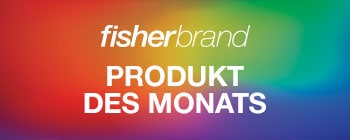Learn More
Nickel(II)-sulfat-Hexahydrat, 99.97 % min. (Metallbasis), Thermo Scientific Chemicals
Beschreibung
Nickel(II) sulfate hexahydrate is mainly used in Ni plating, as mordant in dyeing and in printing textiles, as a blackening agent for zinc and brass and in the fabrication of organic nickel salts. It is used as an effective catalyst for gas-phase dehydration of glycerol to acrolein. Nickel sulfate hexahydrate crystal is an efficient ultraviolet filter material. Columns used in biochemistry and molecular biology can be regenerated with nickel sulfate. It is used to prepare nickel carbonate, a precursor to pigments and nickel-based catalysts.
This Thermo Scientific Chemicals brand product was originally part of the Alfa Aesar product portfolio. Some documentation and label information may refer to the legacy brand. The original Alfa Aesar product / item code or SKU reference has not changed as a part of the brand transition to Thermo Scientific Chemicals.

Spezifikation
Spezifikation
| Chemischer Name oder Material | Nickel(II) sulfate hexahydrate |
| Farbe | Grün |
| Physikalische Form | Klumpen |
| Menge | 50 g |
| Prozentgehaltsbereich | 99.97% min. (metals basis) |
| Löslichkeitsinformationen | Very soluble in water,ethanol and ammonia. |
| Formelmasse | 262.86 (154.77 Anhydrous) |
| Geruch | Geruchsneutral |
| Dichte | 2.07 g/cm3 at 20°C |
Zertifikate
Zertifikate
Eine Chargennummer ist erforderlich, um Ergebnisse für Zertifikate anzuzeigen. Um Ihre Chargennummer zu früheren Bestellungen zu finden, können Sie unsere Auftragsverfolgung nutzen.
| Chargennummer | Art des Zertifikats | Datum | Catalog Number |
|---|---|---|---|
| Y29J029 | Analysenzertifikat | 15/12/2023 | 053130.18,053130.30 |
| X25I087 | Analysenzertifikat | 07/11/2022 | 053130.18,053130.30 |
| S03I027 | Analysenzertifikat | 13/06/2022 | 053130.18,053130.30 |
| X29H052 | Analysenzertifikat | 12/04/2022 | 053130.18,053130.30 |
| Z28G054 | Analysenzertifikat | 12/04/2022 | 053130.18,053130.30 |
Sicherheit und Handhabung



- Nickel(II) sulfate hexahydrate
- Gefahr
- Akute Toxizität Kategorie 4
- LANGFRISTIG GEWÄSSERGEFÄHRDEND Chronisch 1
- AKUT GEWÄSSERGEFÄHRDEND Akut 1
- Karzinogenität Kategorie 1A
- Keimzellmutagenität Kategorie 2
- Reproduktionstoxizität Kategorie 1B
- Inhalationsallergen Kategorie 1
- Hautreizende/-ätzende Wirkung Kategorie 2
- Sensibilisierung der Haut Kategorie 1
- Spezifische Zielorgan-Toxizität Kategorie 1
- H302-Gesundheitsschädlich bei Verschlucken.
- H315-Verursacht Hautreizungen.
- H317-Kann allergische Hautreaktionen verursachen.
- H332-Gesundheitsschädlich bei Einatmen.
- H334-Kann bei Einatmen Allergie, asthmaartige Symptome oder Atembeschwerden verursachen.
- H341-Kann vermutlich genetische Defekte verursachen.
- H350i-Kann bei Einatmen Krebs erzeugen.
- H360D-Kann das Kind im Mutterleib schädigen.
- H372-Schädigt die Organe.
- H400-Sehr giftig für Wasserorganismen.
- H410-Sehr giftig für Wasserorganismen mit langfristiger Wirkung.
- P201-Vor Gebrauch besondere Anweisungen einholen.
- P260-Staub/Rauch/Gas/Nebel/Dampf/Aerosol nicht einatmen.
- P273-Freisetzung in die Umwelt vermeiden.
- P280-Schutzhandschuhe/Schutzkleidung/Augenschutz/Gesichtsschutz tragen.
- P308+P313-BEI Exposition oder falls betroffen: Ärztlichen Rat einholen/ärztliche Hilfe hinzuziehen.
- MIXTURE LIST-Enthält: Nickel(II) sulfate hexahydrate
RUO – Research Use Only
Bitte geben Sie uns Ihr Feedback zu den Produktinhalten, indem Sie das folgende Formular ausfüllen.





.png-250.jpg)

.png-150.jpg)


